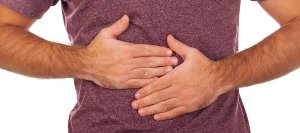Bile Duct Obstruction Treatment in Mineola, NY
Bile duct obstruction occurs when the bile ducts, responsible for carrying bile from the liver to the small intestine, become blocked. This blockage can cause symptoms like jaundice, abdominal pain, and digestive issues. Our board-certified gastroenterologists at Digestive Disease Care provide diagnosis and treatment options to manage bile duct obstruction and improve liver function. For more information, contact us today or book an appointment online. We are conveniently located at 137 Willis Ave Suite 110 2nd Floor, Mineola, NY 11501.


Table of Contents:
What are the symptoms of a blocked bile duct?
What causes a bile duct obstruction?
What are the complications of a bile duct obstruction?
How is a bile duct obstruction diagnosed?
Comprehensive Bile Duct Obstruction Treatment at Digestive Disease Care with Dr. Shirley Johnson-Hall, MD, Board-Certified Specialist
A blocked bile duct, also known as bile duct obstruction, occurs when the flow of bile from the liver to the small intestine is restricted. Bile is essential for digestion, and a blockage can lead to various symptoms, some of which can be severe.
The most common symptoms include:
• Jaundice: One of the most noticeable signs of a blocked bile duct is jaundice, which causes the skin and the whites of the eyes to turn yellow. This occurs because bile, which contains bilirubin, builds up in the bloodstream instead of being excreted through the intestines.
• Abdominal Pain: Pain, often in the upper right side of the abdomen, can occur when the bile duct is blocked. The pain may be sharp or cramp-like and may worsen after eating fatty foods.
• Nausea and Vomiting: Blocked bile ducts can lead to digestive problems, including nausea and vomiting, as the body struggles to process food without sufficient bile.
• Dark Urine: Bile that doesn’t enter the intestines can be reabsorbed into the bloodstream, leading to dark, amber-colored urine.
• Pale Stools: Since bile is responsible for giving stools their brown color, a lack of bile can cause stools to appear pale or clay-colored.
• Itchy Skin: When bile builds up in the bloodstream, it can lead to pruritus, or itching, due to the accumulation of bile salts under the skin.
If you experience any of these symptoms, it’s important to consult with a gastroenterologist for diagnosis and treatment options to avoid further complications.
A bile duct obstruction occurs when the normal flow of bile from the liver to the small intestine is blocked, preventing bile from performing its crucial role in digestion. Several factors can cause a bile duct obstruction, including:
• Gallstones: The most common cause of bile duct obstruction, gallstones can form in the gallbladder and migrate into the bile duct, blocking the flow of bile. Gallstones can cause sudden pain, jaundice, and digestive issues when they obstruct the duct.
• Bile Duct Strictures: Narrowing or scarring of the bile ducts, often due to past surgeries, infections, or inflammation, can lead to an obstruction. This condition is more common in individuals who have had bile duct surgery or trauma.
• Cholangiocarcinoma: This is a rare but serious type of cancer that affects the bile ducts. As the tumor grows, it can block the bile ducts, leading to a complete or partial obstruction. Symptoms may develop gradually and include jaundice, weight loss, and abdominal pain.
• Pancreatic Cancer: Tumors in the pancreas can compress or invade the bile duct, causing an obstruction. This is particularly common in cancers located near the head of the pancreas.
• Infections: Infections such as primary sclerosing cholangitis (PSC) can cause inflammation and scarring in the bile ducts, leading to strictures and blockages.
• Cysts: Rarely, cysts or benign tumors in the bile ducts can cause obstructions.
Understanding the cause of a bile duct obstruction is essential for determining the appropriate treatment. Early diagnosis and intervention can help prevent complications, including liver damage.
A bile duct obstruction can lead to several serious complications if left untreated. When bile cannot flow properly from the liver to the small intestine, it can cause a buildup of toxins in the body, leading to various health issues.
Common complications include:
• Liver Damage: Prolonged bile duct obstruction can cause bile to accumulate in the liver, leading to liver inflammation and eventually liver damage. This can result in cirrhosis, liver failure, or other liver-related diseases.
• Jaundice: A blockage in the bile duct leads to a buildup of bilirubin in the bloodstream, which causes yellowing of the skin and eyes (jaundice). This condition not only affects appearance but also indicates significant liver dysfunction.
• Infection: Bile duct obstructions increase the risk of infections such as cholangitis (infection of the bile ducts) and bacterial liver abscesses. These infections can lead to sepsis, a life-threatening condition that requires immediate treatment.
• Pancreatitis: In some cases, a bile duct obstruction can affect the pancreas, causing pancreatitis. This condition results in inflammation of the pancreas and can lead to severe abdominal pain, vomiting, and digestive issues.
• Gallbladder Damage: If gallstones cause the obstruction, the gallbladder can become inflamed and infected, leading to cholecystitis (gallbladder inflammation), which can require surgery to remove the gallbladder.
• Digestive Problems: Without bile, fat digestion becomes impaired, leading to symptoms such as fatty stools (steatorrhea), nausea, and unexplained weight loss due to poor absorption of fat-soluble vitamins.
If you suspect a bile duct obstruction, it’s essential to seek medical care promptly to prevent these complications. Early diagnosis and treatment can significantly improve outcomes and prevent long-term damage.
Diagnosing a bile duct obstruction typically involves a combination of medical history review, physical examination, and advanced imaging tests. Our board-certified team of gastroenterologists at Digestive Disease Care utilizes a range of diagnostic tools to determine the cause of the obstruction and assess the extent of the blockage.
• Medical History and Physical Exam: The doctor will begin by discussing your symptoms, such as jaundice, abdominal pain, and changes in digestion. A physical exam may include palpating the abdomen to check for tenderness or swelling.
• Blood Tests: Blood tests are crucial for detecting liver function abnormalities, such as elevated liver enzymes, bilirubin levels, and signs of infection. Elevated bilirubin levels, for example, often indicate a bile duct obstruction.
• Ultrasound: An abdominal ultrasound is commonly used to assess the bile ducts and check for gallstones or tumors that may be blocking the duct. It is a non-invasive, first-line imaging tool.
• CT Scan or MRI: For more detailed images, a CT scan or MRI may be performed to view the liver, bile ducts, and surrounding structures, helping to pinpoint the cause of the obstruction.
• Endoscopic Retrograde Cholangiopancreatography (ERCP): This specialized procedure allows direct visualization of the bile ducts and can also be used to remove obstructions or take tissue samples.
A combination of these methods helps our team diagnose and treat bile duct obstructions effectively.
At Digestive Disease Care, Dr. Shirley Johnson-Hall, MD, and our board-certified gastroenterologists provide expert diagnosis and treatment for bile duct obstructions. Using advanced diagnostic tools, we accurately identify the cause of the obstruction. Our team develops personalized treatment plans, including non-invasive procedures, to restore bile flow and relieve symptoms. We are committed to delivering compassionate, patient-centered care to manage and prevent complications from bile duct obstructions. Visit us for expert care and a tailored treatment plan to improve your digestive health and quality of life. Our experienced team ensures comprehensive care and long-term management, helping you find relief and avoid future complications. For more information, contact us today or book an appointment online. We are conveniently located at 137 Willis Ave Suite 110 2nd Floor, Mineola, NY 11501. We serve patients from Mineola NY, Uniondale NY, Queens NY, Floral Park NY, Roslyn NY, Plainview NY, and surrounding areas.

Check Out Our 5 Star Reviews


Additional Services You May Like

Additional Services You May Like
- Abdominal Pain
- Acid Reflux
- Barretts Esophagus
- Bloating
- Capsule Endoscopy
- Celiac Disease
- Colon Cancer Screening
- Colonoscopy
- Constipation
- Crohns Disease
- Diarrhea
- Diverticulitis
- Esophageal PH Monitoring
- Fatty Liver
- Fibroscan
- Gallstones
- Gastroenterologist
- Gastric Chest Pain
- Gluten Intolerance
- Hemorrhoid
- Hemorrhoid Banding
- Hepatitis
- Irritable Bowel Syndrome
- Lactose Intolerance
- Pancreatitis
- Polyps
- Rectal Bleeding
- Stomach
- Ulcerative Colitis
- GI Urgent Care





